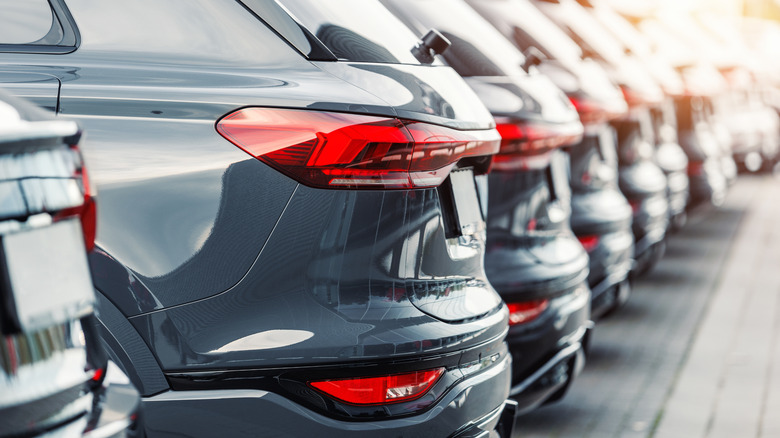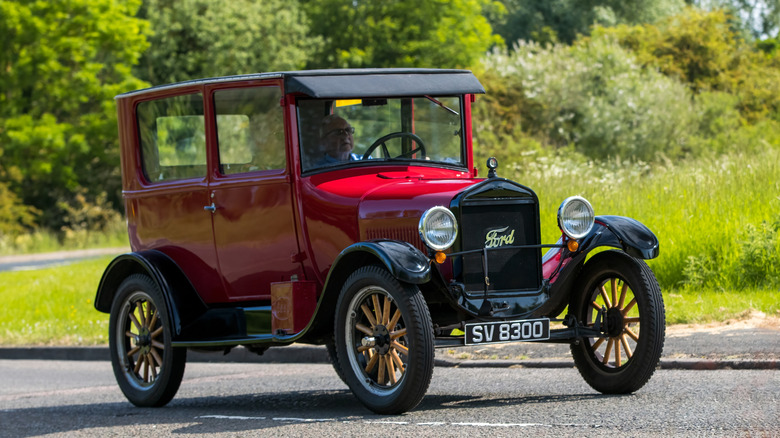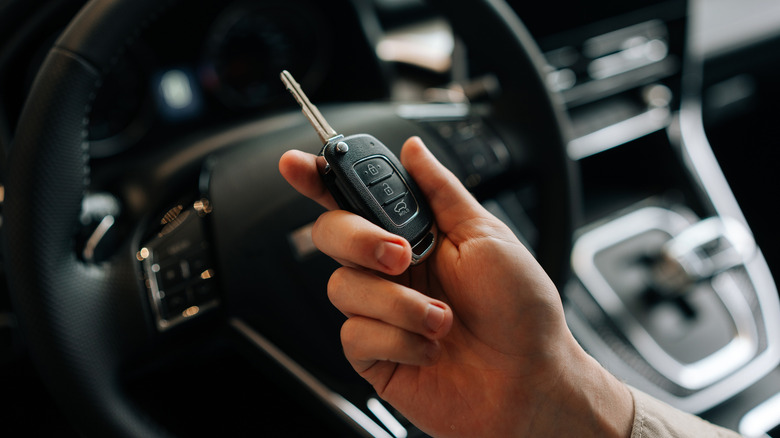5 Old-School Car Accessories We Want Back
In just a little more than a century, the automobile has evolved from a niche invention to a practical requirement. In 2025, there are an estimated 1.64 billion cars in the world, roughly one for every five people on the planet. Over the last 110 years or so, the fundamentals of car design haven't changed all that much. But while it's tough to improve on four wheels and a passenger carriage, the details inside and outside have changed dramatically.
The cars rolling off the factory floor today have standard and premium features that wouldn't be at all recognizable to the drivers of a few decades past. Most of those changes have been positive, offering improvements like touchscreen dashboard interfaces, air pressure sensors, built-in GPS navigation, and more. But those changes come with a cost.
Change comes quickly for some motorists. One day, after a trip to a dealership, your old manual-loving system gets replaced with an electric one, or the hand-cranked windows get replaced with buttons and motors. We all collectively revel in the new level of convenience and the unceasing progress of technology. It's only years later that we can look back and take stock of what's faded into the rearview mirror. These are some of the features (or at least vibes) we wish hadn't been lost to time.
Exterior sun visors
Keeping the sun out of your eyes while on the move is an eternal problem that predates the motorcar. An enclosed passenger compartment protects travelers from the wind and rain, but direct sunlight can still cause problems seeing and avoiding objects on the road.
In the early days of automobiles, many vehicles employed external sun visors that hung over the windows, creating a shaded area for the driver and passengers inside. Commonly called glare shields at the time, external visors were first fitted to cars in 1924, including the Ford Model T. It was less than a decade before the sun visor moved inside the vehicle, where the driver could reach it to make adjustments with ease. Inside, visors can also be used to hold onto your sunglasses, important documents, and even a CD holder if you're still old school.
Today, many sun visors have additional features like built-in mirrors and electric lights. There's even an emerging class of high-tech sun visors that block the sun automatically as it moves around your field of view while leaving most of the windshield visible. Modern visors are objectively better than external ones, but there's something undeniably cool about the old look.
Glove box wet bar
The 1957 Cadillac Eldorado Brougham was the ultimate in midcentury luxury driving. It featured a roof made of brushed stainless steel, suicide doors, and a suite of features that were revolutionary for the time. The Cadillac Eldorado Brougham featured powered seats, powered windows, automatic locks, cruise control, and air conditioning.
Only 400 of the 1957 models were made, and it was one of the most expensive production cars on the road at the time. It rolled off the factory floor with a sticker price of about $13,000 in 1957, roughly equivalent to $152,000 today. One sold at auction in 2021 for $185,000.
In addition to the above-listed bells and whistles, it also had luxury features like perfume in the center console and a wet bar in the glove box. It was the perfect accessory for when you wanted to wet your whistle on the road, and magnets built into the bar helped to hold cups in place when you were in motion. The wet bar is no longer available in consumer cars for obvious reasons. Drinking and driving is a deadly combination, and the removal of the wet bar was absolutely the right move, but we do miss when cars were more than just a way to get from here to there.
Mechanical turn signals
Turn signals were phased in as early as the 1930s and have been a required feature since 1960. The first turn signals worked by way of a spring or a thin piece of metal. When an electrical current was applied, the metal heated and expanded, changing position and completing a circuit. The metal then cooled rapidly and returned to its original position, breaking the circuit. The rapid back and forth flashed the turn signal light on and off and created the blinker's characteristic clicking sound.
Later, some cars replaced the spring system with an electromagnet system, but it still used a periodic moving part that created a distinctive clicking noise. Modern cars can operate the signals with a computer, but without any moving parts there's no click. Because drivers have become accustomed to the noise, many cars create it artificially and play it through the speakers.
The click also has some utility, letting the driver know when they've left the signal active. Most turn signals have a self-cancelling mechanism that disables them automatically after you've completed a turn, but it doesn't work for more subtle actions like changing lanes. The clicking noise helps remind you to turn the signal off. Smarter turn signals could learn to recognize when you've completed a lane change, and the ticking sound might go away for good.
Actual physical car keys
The car key (or car keys, as the case may be) has evolved pretty dramatically since the introduction of the automobile. Early keys acted purely as a security measure. The driver had to crank the engine to get the car started, while the key prevented that from happening when you weren't around. Later, keys evolved to open the doors and engage the engine.
What we think of as a car key was introduced in 1949. Back then, you needed one key to open the doors and another to engage the ignition. It wasn't until the '60s that combination keys were introduced, which could open the door and start the car all in one. In the 1990s, we saw the spread of the key fob, which offered keyless entry and eventually, keyless ignition. Some fobs also include a physical key inside them, allowing you to open the door and/or start the ignition if the fob battery dies.
Over the decades, manufacturers have attempted a few different entry and ignition systems, including numbered combinations, keyless entry, and more. Some cars even offer digital keys stored on a smartphone or smartwatch. On a day-to-day basis, modern keys are far more convenient, but we do miss the feeling of flicking our wrists and feeling the engine come to life.
Antenna toppers
Modern antennas are small enough that they usually exist in low-profile shark fins on the top of the car or hidden inside the glass, doors, or some other part of the car. In the old days, antennas were much more overt, made of long, slender pieces of metal extending from the car's exterior. Such a long protrusion practically begged for ornamentation. For a couple of decades, people used to decorate their car antennas with smiley faces, sports team logos, fast food mascots, and more.
The antenna topper dates back to the early 1960s. By then, car stereos were common features and, as a result, so were antennas. The gas station chain Union 76 (today known simply as 76) erected new gas station signs featuring a rotating orange circle and the number 76. Later, the company created plastic foam versions of the logo, which could be pushed down onto the car antenna. It soon evolved from a simple marketing gimmick into a cultural fad, with as many different antenna toppers as you can imagine.
The antenna topper is practically extinct today, an unintended consequence of improved antenna technologies. While there were plenty of downsides to a large external antenna, we definitely miss how a personalized topper made it easier to find your car in a crowded parking lot.





